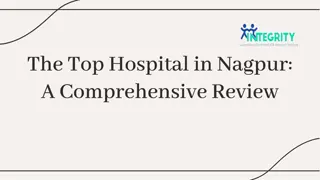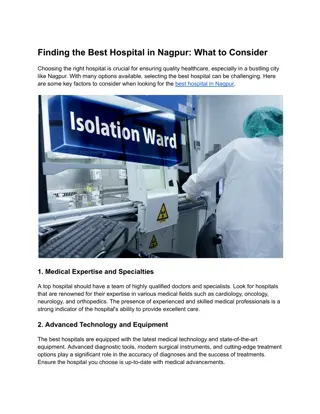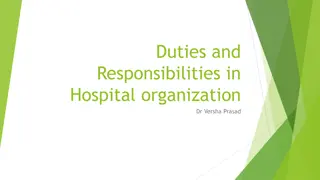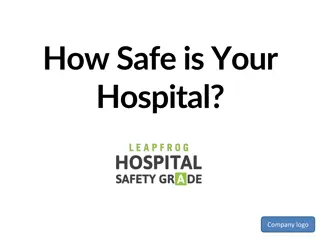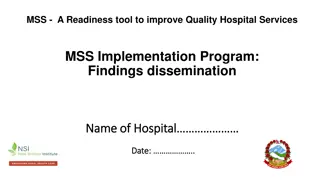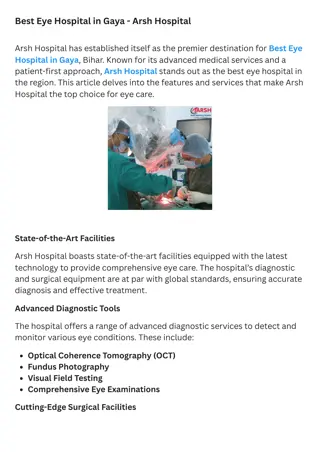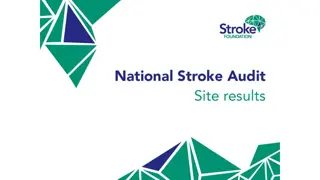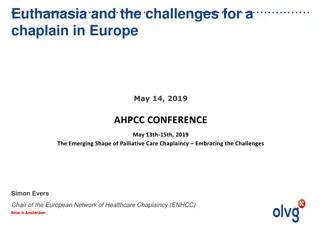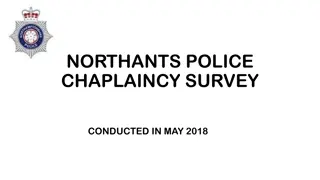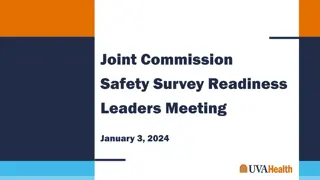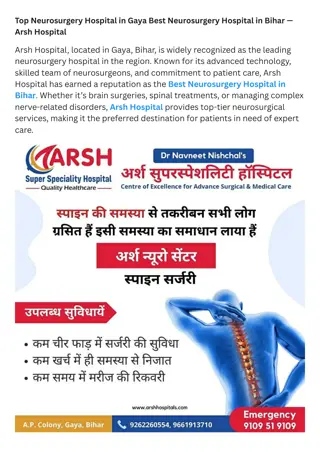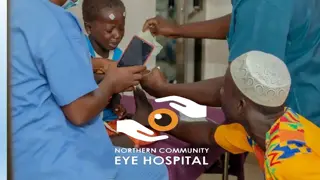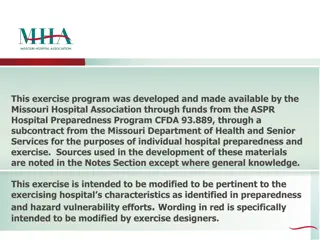Insights from a National Survey: Roles and Trends of Hospital Chaplains
A new national survey conducted on the number, roles, and functions of hospital chaplains reveals key insights to help understand the landscape of spiritual care in healthcare settings. The survey explores the demographics of healthcare chaplains in the U.S., highlights growth strategies for chaplaincy, and provides an in-depth analysis based on responses collected. Through detailed data and analysis, the survey sheds light on the evolution and impact of chaplaincy care over the years.
Download Presentation

Please find below an Image/Link to download the presentation.
The content on the website is provided AS IS for your information and personal use only. It may not be sold, licensed, or shared on other websites without obtaining consent from the author.If you encounter any issues during the download, it is possible that the publisher has removed the file from their server.
You are allowed to download the files provided on this website for personal or commercial use, subject to the condition that they are used lawfully. All files are the property of their respective owners.
The content on the website is provided AS IS for your information and personal use only. It may not be sold, licensed, or shared on other websites without obtaining consent from the author.
E N D
Presentation Transcript
A New National Survey of Hospital Directors: The Number, Roles and Functions of Hospital Chaplains Rev. Eric Hall President & CEO Rev. George Handzo, BCC, CSSBB Director, Health Services Research & Quality Rev. Susan K. Wintz, BCC Director, Professional & Community Education
Objectives Understand the basic principles and process behind mounting and completing an online survey Describe the basic demographics of health care chaplains in the U.S. Leverage the results of the survey to mount growth strategies for chaplaincy in their own settings 2
Definitions Chaplain Spiritual Care Chaplaincy Care Pastoral Care Assessment- Screening, History 3
Background Early 2000 s, surveyed hospital chaplain directors and administrators on factors affecting provision of spiritual care Still the only data of its kind but now about 15 yrs. old Need updated data By repeating could compare against original numbers 4
Process Get a team What questions do you want to answer? Stakeholders/end users including field, marketing, product development What is the field today? How has the field changed? What are you going to use the data for? Draft questions Readable layout Beta test Mailing lists Data collection 5
Execution Survey Monkey Chose email vs. snail mail Problems with unsolicited email- 3 month delay Wound up with snail mail + in-house lists More chaplaincy involved people- bias? Data scrubbing because of write in Lesson learned- do not use unsolicited email 6
Demographics 800 responses (2016) vs. 500 (2004) All states and DC Mostly general hospitals Faith based- 30% (2016) vs. 22% (2004) Faith based were 60% Catholic Respondents who are chaplains- 50% (2016) vs. 40% (2004) 7
Demographics Type of Area Rural- 16.7 % (2016) vs. 44% (2004) Suburban- 25.7 % (2016) vs. 25% (2004) Urban- 45.4% (2016) vs. 30% (2004) Type of Organization For Profit- 13% (2016) vs. 12% (2004) Not For Profit- 80% (2016) vs. 88% (2004) 8
Staffing Hospitals that have a Chaplaincy Department- 61% Professional Chaplains 71% (2016) vs. 60%(2004) have professional chaplains How many? Median= 4 How many BCC? Median= 2 (50%)(2016) vs. 50%(2004) How many FTE? Median= 3 How many outpatient FTE- Median- 1 (20%) Unpaid Volunteer Chaplains 20% have unpaid volunteer chaplains How many? Median= 7 How many FTE? Median= 2 How many BCC? Median= 1 (2%) How many outpatient FTE? Median= 3 9
Staffing Call Community Clergy As Needed- 80% Chaplaincy Students 25% have students How many? Median= 4 How many FTEs? Median= 4 How many FTEs in Outpatient? Median= 1 (2%) 10
Palliative Care 50% have palliative care teams- general hospitals were higher Below other reported numbers 75% of teams have chaplains Mean amount of chaplain time on the team 50% 11
Documenting 90% of professional chaplains document 50% of volunteer chaplains document 12
Drivers of Change Downside Budget Upside Perception that Chaplains Add Value Greater Patient Demand for Spiritual Care 15
What is Important for Chaplains to Do? Provide EOL Care- 9.46 Provide Emotional Support to Patients/Families- 9.28 Provide Emotional Support to Staff- 9.01 Pray with Patients/Families- 8.97 Help Patients/Families Dealing with Difficult Decisions- 8.82 Be the Point Person for Integrating Spirituality into the Care of Your Institution- 8.78 16
What is Important for Chaplains to Do? Do Crisis Counseling and Debriefing for Staff- 8.70 Conduct and Document Spiritual Assessments- 8.69 Contribute to Improving Patient Satisfaction Scores-8.56 Be Part of the Palliative Care Team- 8.49 Serve as a Patient s Advocate- 8.37 Provide Ethical Consultation- 8.37 Do Grief and Bereavement Counseling- 8.35 Be Part of Advance Care Planning Discussions- 7.98 Serve as Liaison to Local Clergy- 7.87 17
What is Important for Chaplains to Do? Promote Patient Safety-7.81 Provide Religious Rituals-7.71** Be a Liaison to the Community at Large-7.48 Contribute to Institutional Cost Savings- 7.18 Provide Education on Advance Directive to Patients and Families- 6.65 Provide Religious Services and Worship- 6.28** Handle Requests for Organ and Tissue Donation- 4.53** 18
Differences Between Chaplains and Non-Chaplains Ratings for chaplains and non-chaplains for each item were very close. In virtually every case, the item ratings for non-chaplains were lower than those for chaplains Only three were significantly different- Worship, Ritual & Organ Donation Provision of religious services (worship & ritual) rated lower than most other activities. Same as last time. 19
Findings Percentage that say they have chaplains is up in all regions of the country but 30% do not have professional chaplains. Chaplains are assigned to Outpatient and Palliative Care but still a lot missing. About twice as many hospitals have added chaplaincy jobs over the past 10 years as have cut them. This finding holds across all geographic regions. 20
Future Questions Drill down on drivers of change How do ranking of important tasks vary across variables like size and location of hospital? What are the barriers keeping hospitals from having professional chaplains? How do we overcome the barriers that cause chaplaincy positions to be cut? 21






